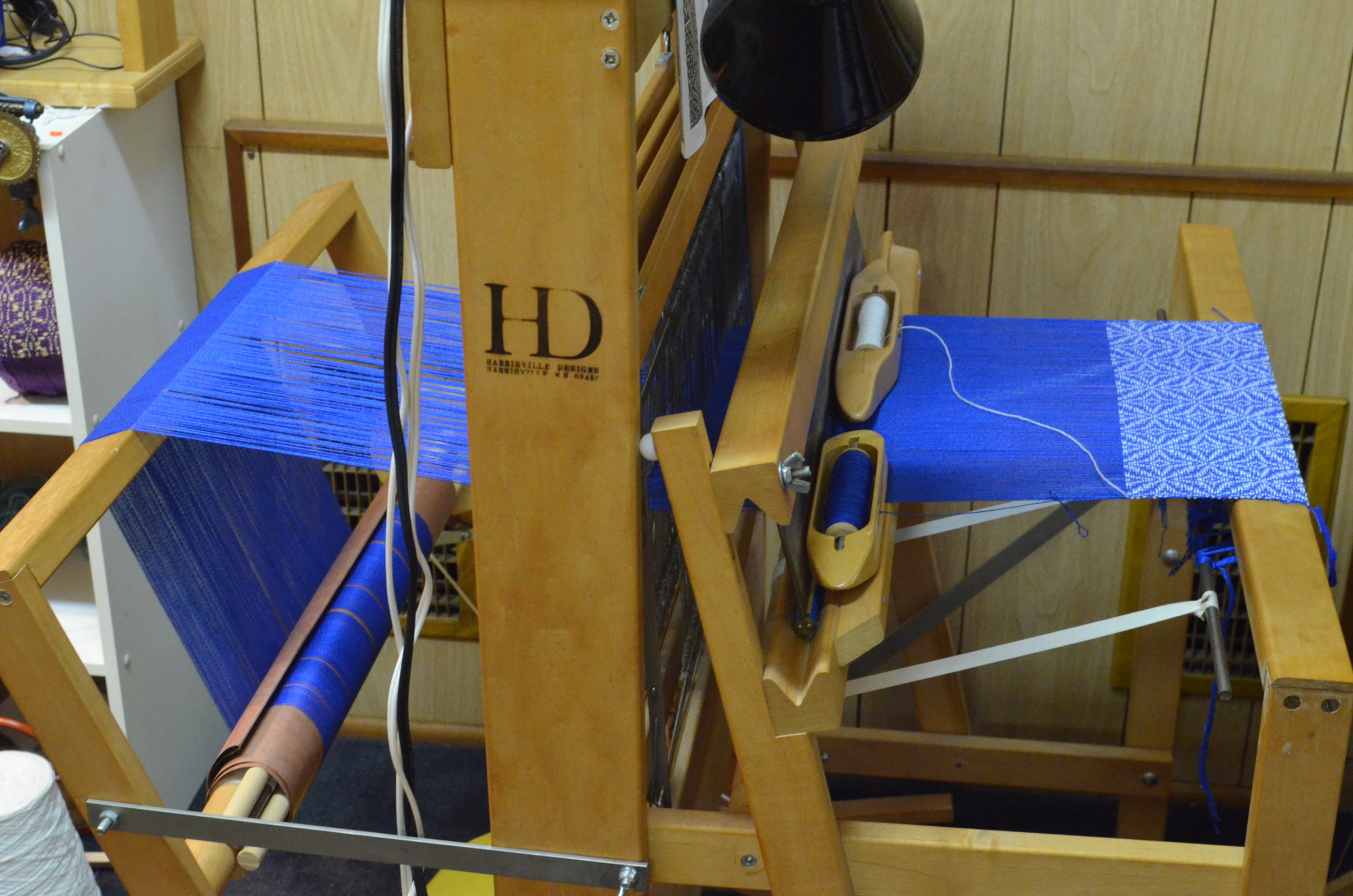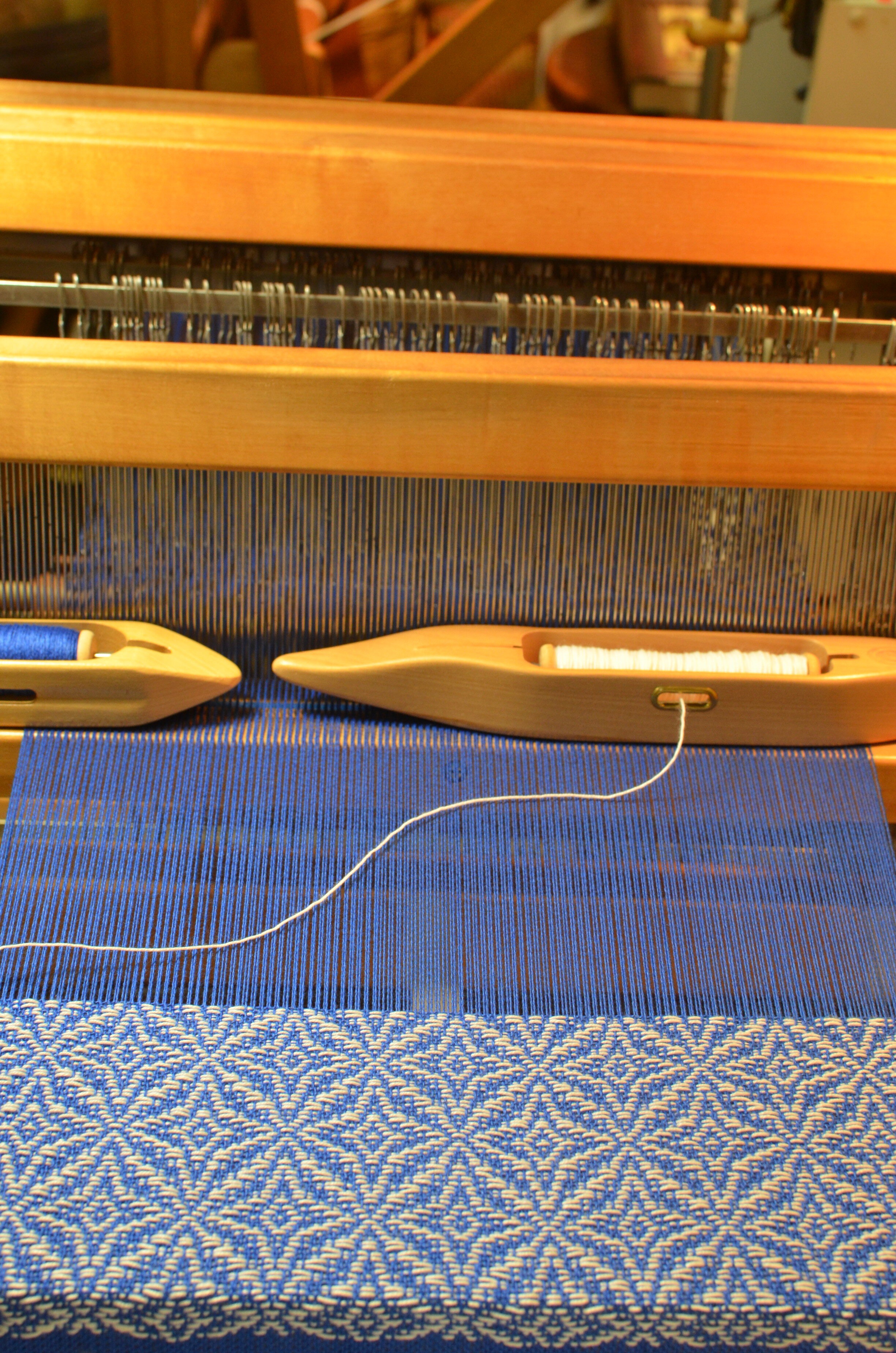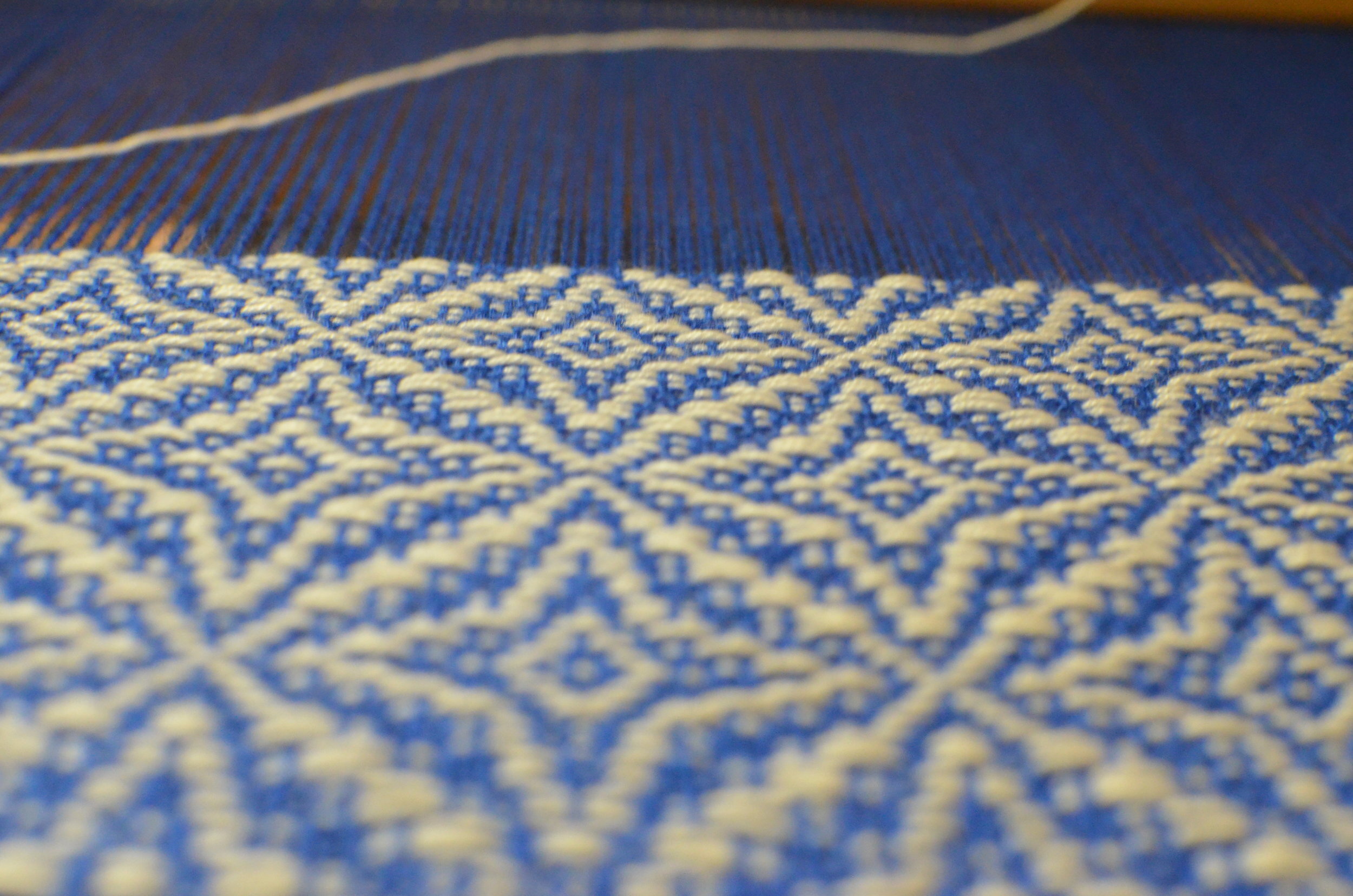Monastery Crafts: The Making of a Stole
Deep in the monastery basement is a room full of color. Reds, blues, green—you name it it's there—in shades from the palest baby pink to the brightest 'safety vest' orange. The afternoon sun pours in windows high on the western wall and a steady wooden beat echoes from out its doors. Can you guess what this room is?
It's our Loom Room. Also known as the weaving room, it houses our two 4-harness floor looms and all the accompanying paraphernalia needed for the art of weaving. Despite the room's official name, it also houses our knitting needles, crochet hooks, and the yarn and gadgets involved in those crafts as well. Weaving has a moderately long but broken history in our monastery. Sr. Maria of the Cross began with a rickety old loom, followed shortly by Sr. Mary Catharine to whom the weaving room is certainly most indebted, having acquired our floor looms and the other various gizmos. The art then passed on to Sr. Maria Teresa and Sr. Joseph Maria. Just recently one of our novices, Sr. Maria Johanna has begun to learn.
One of the products of the Loom Room is the confessional stole sometimes gifted to new priests of the Order who say a First Mass for us (if they give us enough advanced notice!). We thought you might be interested in seeing the process for making these stoles.
1) The process begins with pen and paper, with a little help from a calculator. The quantity of thread required having been computed, we're ready for the next stage.
3) Next the warp thread (the thread used to dress the loom) must be measured out.
5) Almost! First a thicker yarn is used to spread the threads evenly. After leaving room for the fringe the weaving begins... and then quickly halts as you go back to hemstitch the beginning.
6) Not the best picture, but now we're off and running! When the desired length has been reached the end is again hemstitched and the stole can be removed from the loom. We often put enough thread on the loom for 3 or 4 stoles. The stoles can be removed as they are finished, or left on as the rest are woven. It depends how quickly a new priest is showing up!
2) Making sure you have enough thread! We like to use Camilla Valley Farm's UKI- 5/2 Mercerized Cotton in Purple (#27)
With the warp having been prepared we're ready to go on.
4) The most complicated part of the process (...besides possibly the calculations...) is warping (or dressing) the loom. Each thread must be carefully pulled through the beater (seen below) and a heddle (those vertical metal things in this picture), arranged specifically for the desired pattern. Once the warp is fastened to the back of the loom, an intricate process is used to roll up the warp, making sure tension is kept steady and even. The front is tied off and we're ready to begin!
The end having been hemstitched, it is time to weave!
7) The last part is embroidering on at least the middle cross. Here Sr. Mary Veronica is embroidering on the cross.
This is the process to go from THIS (left picture) to THIS (right picture)!
The looms don't make only confessional stoles: they've produced (with a little help from a nun!) lectionary ribbons, table runners, huck lace for small altars, scarves, stoles, orphreys, belts, wall hangings, etc.! At the moment the other loom is busy with a Marian lectern cover.




